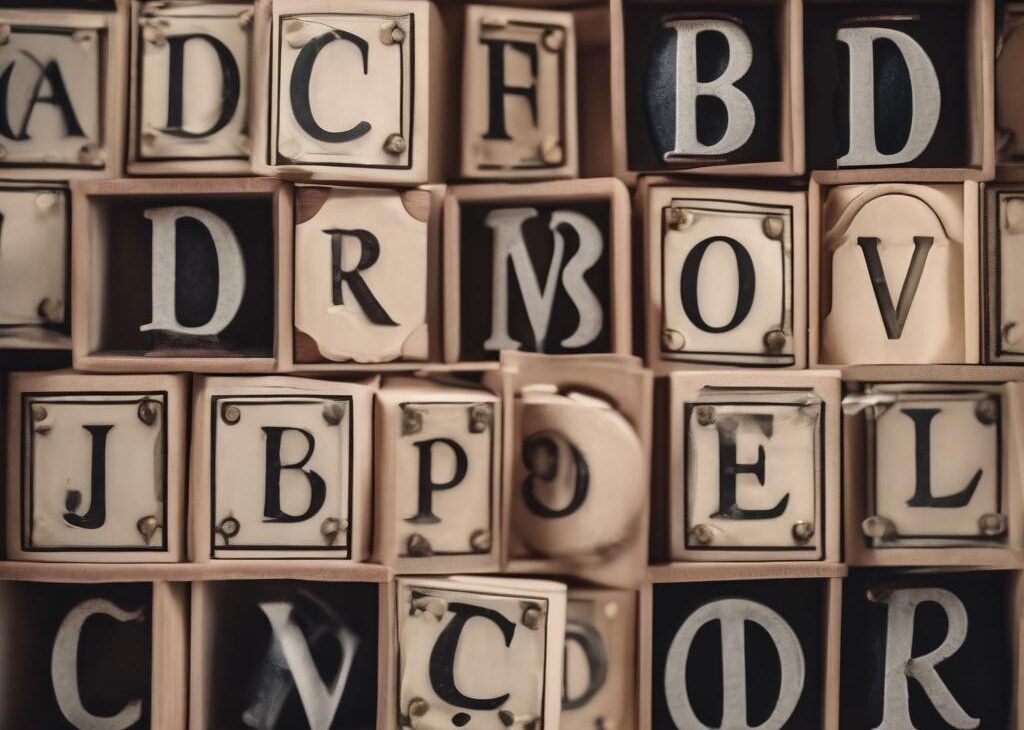-
Table of Contents
- The Power of Alphabet Images in English: Unlocking Creativity and Enhancing Learning
- The Benefits of Alphabet Images in English
- Examples of Alphabet Images in English
- 1. Animal Alphabet:
- 2. Object Alphabet:
- 3. Nature Alphabet:
- Using Alphabet Images in Educational Settings
- 1. Interactive Flashcards:
- 2. Alphabet Wall Display:
- 3. Alphabet Storytelling:
- 4. Alphabet Games:
- Q&A
- Q1: Can alphabet images be used for older learners?
- Q2: Are there any studies supporting the effectiveness of alphabet images?
- Q3: Can alphabet images be used for individuals with learning disabilities?
- Q4: How can parents incorporate alphabet images into home learning?
- Q5: Are there any online resources available for alphabet images?
- Summary
When it comes to learning a new language, visual aids play a crucial role in helping individuals grasp and retain information. One such powerful tool is the use of alphabet images in English. These images not only make learning more engaging and enjoyable but also stimulate creativity and enhance memory retention. In this article, we will explore the benefits of using alphabet images in English, provide examples of their application, and discuss how they can be effectively incorporated into educational settings.
The Benefits of Alphabet Images in English
1. Enhanced Visual Learning: Humans are visual creatures, and our brains are wired to process visual information more effectively. By associating each letter of the alphabet with a corresponding image, learners can create a visual connection that aids in memorization and recall.
2. Improved Creativity: Alphabet images provide a creative outlet for learners to associate abstract concepts with concrete visual representations. This process encourages imaginative thinking and allows learners to develop their own unique connections between letters and images.
3. Increased Engagement: Traditional methods of learning the alphabet can be monotonous and uninspiring. However, incorporating alphabet images into lessons can make the learning process more interactive and enjoyable, leading to higher levels of engagement and motivation.
4. Multi-Sensory Learning: Alphabet images engage multiple senses, such as sight and imagination, which enhances the learning experience. This multi-sensory approach stimulates different parts of the brain, resulting in a deeper understanding and retention of the material.
Examples of Alphabet Images in English
Let’s explore some examples of how alphabet images can be used to facilitate learning in English:
1. Animal Alphabet:
Associating each letter of the alphabet with an animal image can be a fun and effective way to introduce letters and their sounds to young learners. For example:
- A: Alligator
- B: Bear
- C: Cat
- D: Dog
By visualizing the animal associated with each letter, children can easily remember the corresponding sound and letter formation.
2. Object Alphabet:
Using everyday objects as alphabet images can help learners associate letters with familiar items. For instance:
- A: Apple
- B: Ball
- C: Car
- D: Duck
By connecting letters to objects they encounter in their daily lives, learners can establish a stronger connection between the letter and its sound.
3. Nature Alphabet:
Associating letters with elements from nature can provide a visually captivating way to learn the alphabet. For example:
- A: Acorn
- B: Butterfly
- C: Cloud
- D: Dolphin
By incorporating images from nature, learners can develop a deeper appreciation for the world around them while learning the alphabet.
Using Alphabet Images in Educational Settings
Alphabet images can be effectively incorporated into various educational settings to enhance learning outcomes. Here are some strategies for utilizing alphabet images in the classroom:
1. Interactive Flashcards:
Create flashcards with alphabet images on one side and the corresponding letter on the other. Use these flashcards during group activities or individual study sessions to reinforce letter recognition and sound association.
2. Alphabet Wall Display:
Design an alphabet wall display featuring alphabet images and their corresponding letters. This visual aid serves as a constant reminder for learners and can be referred to during lessons or independent study time.
3. Alphabet Storytelling:
Encourage learners to create stories using alphabet images. This activity not only reinforces letter recognition but also promotes creativity and language development.
4. Alphabet Games:
Create interactive games that involve matching alphabet images with their corresponding letters. This gamified approach makes learning enjoyable and helps reinforce letter-sound associations.
Q&A
Q1: Can alphabet images be used for older learners?
A1: Absolutely! While alphabet images are commonly associated with early childhood education, they can be adapted for older learners as well. For example, instead of using simple animal images, more complex images or symbols can be used to represent each letter.
Q2: Are there any studies supporting the effectiveness of alphabet images?
A2: Yes, several studies have shown the positive impact of visual aids, including alphabet images, on learning outcomes. For instance, a study published in the Journal of Educational Psychology found that incorporating visual elements into language learning significantly improved vocabulary acquisition and retention.
Q3: Can alphabet images be used for individuals with learning disabilities?
A3: Yes, alphabet images can be particularly beneficial for individuals with learning disabilities. The visual nature of alphabet images helps create stronger associations between letters and sounds, making it easier for individuals with learning disabilities to grasp and retain information.
Q4: How can parents incorporate alphabet images into home learning?
A4: Parents can create alphabet image flashcards, use alphabet image posters, or even engage in alphabet image scavenger hunts around the house. By incorporating alphabet images into everyday activities, parents can make learning the alphabet a fun and interactive experience.
Q5: Are there any online resources available for alphabet images?
A5: Yes, there are numerous online resources available that provide free printable alphabet image flashcards, worksheets, and posters. These resources can be easily accessed and utilized to enhance learning at home or in the classroom.
Summary
Alphabet images in English offer a powerful tool for enhancing learning outcomes and stimulating creativity. By leveraging the visual nature of these images, learners can establish stronger connections between letters and their corresponding sounds. Incorporating alphabet images into educational settings, such as through interactive flashcards and alphabet games, can make the learning process more engaging and enjoyable. Whether for young learners or individuals with learning disabilities, alphabet images provide a valuable resource for unlocking the potential of language acquisition. So, let’s embrace the power of alphabet images and embark on a journey of language learning that is both effective and enjoyable.





